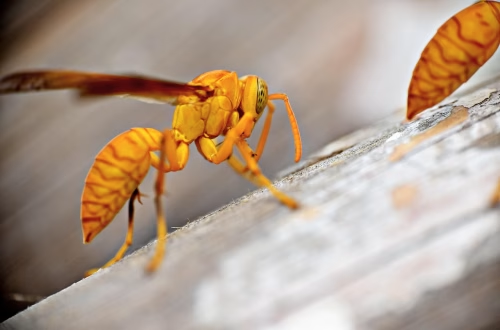Summary:
Restaurant pest management is a critical aspect of food safety and operational hygiene, addressing infestations of rodents, insects, and other pests that threaten health codes and customer trust. This article explores common pest issues in restaurants, effective control methods, legal compliance, and the risks of neglecting proper pest management. Restaurant owners, managers, and staff must prioritize proactive pest control to avoid fines, closures, and reputational damage. By implementing best practices and partnering with specialized pest control services, businesses can maintain a clean, compliant, and pest-free environment.
What This Means for You:
- Health and Compliance: Failure to manage pests can lead to health code violations, fines, or even forced closures.
- Customer Trust: A single pest sighting can damage your restaurant’s reputation and drive away customers.
- Proactive Measures: Regular inspections and preventive treatments are more cost-effective than reactive pest control.
- Future Outlook: Climate change and urbanization are increasing pest pressures, making professional pest management essential.
Restaurant Pest Management Explained:
Restaurant Pest Management refers to the systematic prevention, monitoring, and elimination of pests in food service establishments. Unlike residential pest control, restaurant pest management requires adherence to strict health and safety regulations, including FDA Food Code and local health department standards. Pests in restaurants pose significant risks, contaminating food, spreading disease, and damaging property.
Effective pest management involves a combination of sanitation, structural maintenance, and professional pest control interventions. Restaurants must implement Integrated Pest Management (IPM) strategies, which prioritize prevention and minimal chemical use. This approach reduces reliance on pesticides while maintaining a safe dining environment.
Types of Pest Issues:
Restaurants face unique pest challenges due to food availability, moisture, and high traffic. Common pests include:
- Rodents (Rats & Mice): These pests contaminate food with droppings and urine, spreading diseases like salmonella and hantavirus. The FDA mandates zero tolerance for rodent activity in food prep areas.
- Cockroaches: Known carriers of pathogens, cockroaches thrive in warm, humid environments like kitchens and storage areas. State health codes require immediate action upon detection.
- Flies: Fruit flies, drain flies, and house flies spread bacteria from garbage to food surfaces. Federal regulations require proper waste management to deter infestations.
- Stored Product Pests: Pantry moths, beetles, and weevils infest dry goods like flour and grains, leading to costly food waste.
Local and federal laws, such as the Food Safety Modernization Act (FSMA), require restaurants to maintain pest-free environments. Non-compliance can result in inspections, penalties, or legal action.
Common Pest Control Methods:
Successful restaurant pest management relies on a multi-layered approach:
- Sanitation: Daily cleaning of floors, equipment, and drains prevents pest attractants. Waste should be stored in sealed containers and removed frequently.
- Exclusion: Sealing cracks, installing door sweeps, and screening vents block pest entry points. The National Restaurant Association recommends quarterly structural inspections.
- Monitoring: Glue traps, pheromone traps, and UV fly traps help detect early infestations without chemicals.
- Targeted Treatments: EPA-approved baits and insecticides are applied by licensed professionals in compliance with food safety laws.
For example, a New York pizzeria eliminated a cockroach problem by combining deep cleaning with crack-and-crevice treatments, avoiding kitchen shutdowns.
Risks and Consequences:
Ignoring pest management can devastate a restaurant business:
- Health Violations: Health inspectors routinely check for pest activity. Violations appear on public records, deterring customers.
- Food Contamination: Pests transmit E. coli, Listeria, and other pathogens, potentially causing foodborne illness outbreaks.
- Financial Loss: Infestations lead to food disposal, structural repairs, and lost revenue during closures. A single online review mentioning pests can reduce bookings by 30%.
- Legal Liability: Customers sickened by pest-related contamination may file lawsuits under food safety laws.
In 2023, a Chicago café closed permanently after failing a health inspection due to rodent activity, highlighting the stakes of poor pest control.
Choosing a Pest Control Service:
Selecting the right pest control provider is critical for restaurants:
- Specialization: Choose companies with experience in food service pest management, not just residential services.
- Certifications: Look for licenses, FDA/IPM training, and membership in industry groups like the National Pest Management Association (NPMA).
- Customized Plans: Providers should offer tailored solutions based on your restaurant’s layout, cuisine type, and local pest pressures.
- Eco-Friendly Options: Many restaurants now demand green pest control methods to align with sustainability goals.
Top services provide detailed service reports for health inspections and staff training on pest prevention—key for compliance.
People Also Ask About:
- How often should a restaurant schedule pest control? Most experts recommend monthly treatments for high-risk areas (kitchens, storage) and quarterly inspections for dining spaces, adjusted based on pest activity.
- Are natural pest control methods effective for restaurants? While essential oils and diatomaceous earth can supplement professional treatments, they rarely suffice alone for commercial kitchens facing heavy pest pressures.
- Can pests come from food deliveries? Yes—inspecting shipments for signs of pests (e.g., gnaw marks, larvae) is crucial. Reject infested deliveries immediately.
- What temperature kills pantry pests? Freezing infested flour or grains at 0°F for 4 days eliminates eggs and larvae, though prevention via airtight containers is preferable.
- Do ultrasonic pest repellers work in restaurants? No credible studies support their efficacy in commercial settings; exclusion and sanitation remain the gold standards.
Expert Opinion:
The rise in global pest populations, coupled with stricter food safety regulations, makes professional pest management non-negotiable for restaurants. Emerging threats like bed bugs in dining booths and antibiotic-resistant cockroaches require advanced IPM strategies. Experts warn that DIY approaches often worsen infestations by driving pests deeper into walls. Investing in preventive pest control preserves both public health and profit margins.
Related Key Terms:
- Commercial kitchen pest control services
- FDA pest management guidelines for restaurants
- Best rodent control for restaurants
- Eco-friendly pest control for food businesses
- How to pass health inspection pest control
- Los Angeles restaurant pest management laws
- Cost of professional pest control for restaurants
Pest Control Disclaimer
This content is for educational purposes only and does not replace professional pest inspection, treatment, or safety advice. Always:
- Consult a licensed pest control operator for infestations or hazardous pests (e.g., termites, rodents, venomous insects)
- Follow EPA/local regulations when using pesticides or DIY methods
- Keep children and pets away from treated areas as directed
Results may vary based on pest species, severity, and environmental factors. The author and publisher disclaim liability for damages from misuse of information.
*Featured image sourced by Pixabay.com




